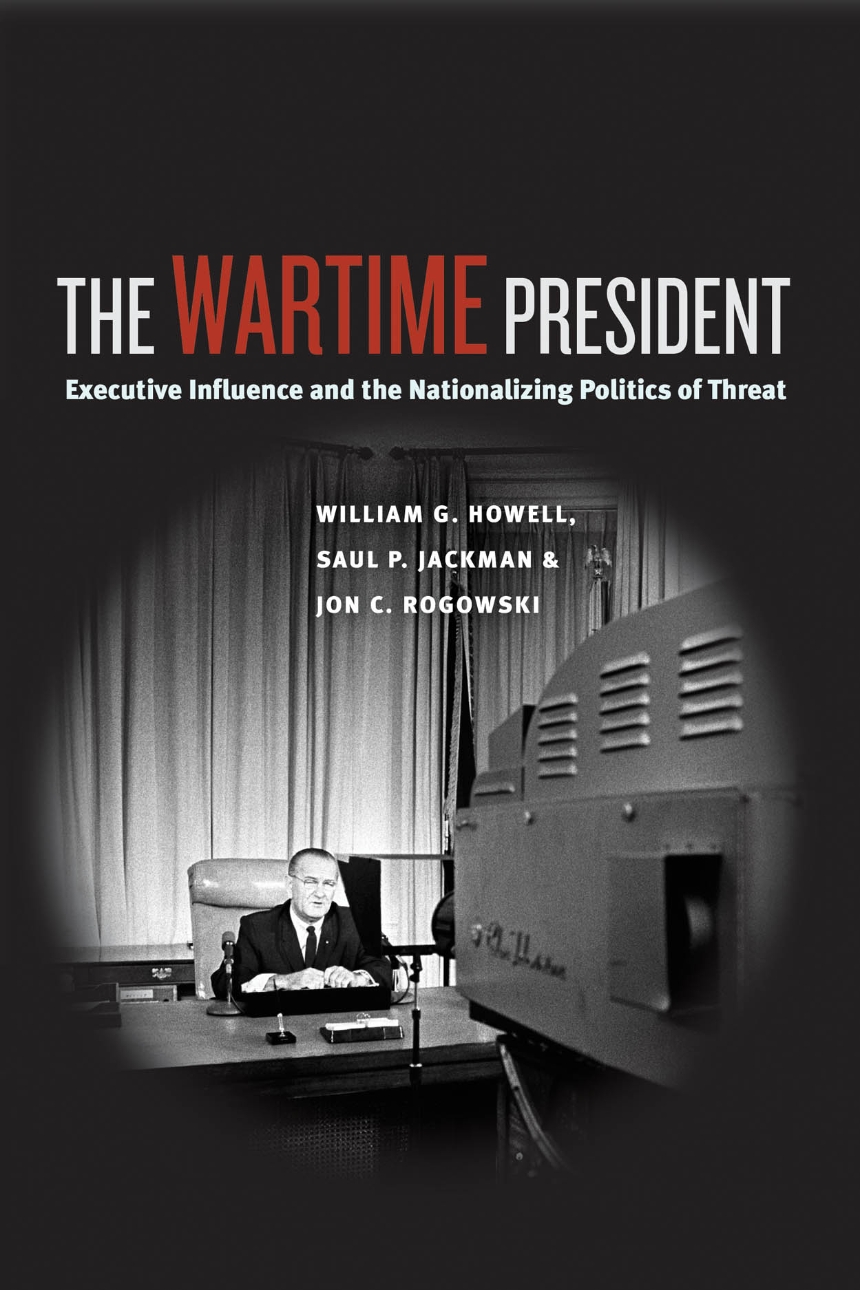The Wartime President
Executive Influence and the Nationalizing Politics of Threat
The Wartime President
Executive Influence and the Nationalizing Politics of Threat
For the first time, William G. Howell, Saul P. Jackman, and Jon C. Rogowski systematically analyze the question. Congress, they show, is more likely to defer to the president’s policy preferences when political debates center on national rather than local considerations. Thus, World War II and the post-9/11 wars in Afghanistan and Iraq significantly augmented presidential power, allowing the president to enact foreign and domestic policies that would have been unattainable in times of peace. But, contrary to popular belief, there are also times when war has little effect on a president’s influence in Congress. The Vietnam and Gulf Wars, for instance, did not nationalize our politics nearly so much, and presidential influence expanded only moderately.
Built on groundbreaking research, The Wartime President offers one of the most significant works ever written on the wartime powers presidents wield at home.
368 pages | 18 line drawings, 31 tables | 6 x 9 | © 2013
Chicago Series on International and Domestic Institutions
Political Science: American Government and Politics, Diplomacy, Foreign Policy, and International Relations, Public Policy
Reviews
Table of Contents
List of Tables and Figures
Preface
Acknowledgments
PART I: BACKGROUND
1 War and the American Presidency
1.1 A Notion Expressed
1.2 A Notion Evaluated
1.3 Sifting through the Claims
1.4 Quantitative Studies on War and Presidential Power
1.5 Moving Forward
PART II: THEORIZING ABOUT INTERBRANCH BARGAINING DURING WAR
2 The Policy Priority Model
2.1 Theoretical Building Blocks: Policies, Outcomes,
and Interbranch Bargaining
2.2 The Model
2.3 Nontechnical Summary
2.4 Conclusion
3 The Model’s Predictions about Modern U.S. Wars
3.1 Defining War
3.2 Which Equilibrium Are We Playing?
3.3 Mea sur ing the Prioritization of National Outcomes
3.4 Characterizing the Wars
3.5 Key Expectations
3.6 Competing Explanations
3.7 A closing Note on Theory Testing
PART III: EMPIRICAL INVESTIGATIONS
4 Spending in War and in Peace
4.1 Data
4.2 Primary Analyses
4.3 Strategic Proposal Making
4.4 Distinguishing between Two Theoretically Informed Causal Mechanisms
4.5 A Comment on Endogenous War Making
4.6 Conclusion
5 Voting in War and in Peace
5.1 Data and Methods
5.2 Post- 9/11 Wars and the 107th Congress
5.3 Earlier Wars
5.4 World War I and the Relevance of Stateside Attacks
5.5 War and Other Crises
5.6 Conclusion
6 Case Studies I: Illustrations
6.1 The First Total War
6.2 Pearl Harbor and National Labor Policy
6.3 Roo se velt and All the Resplendence of a War time Presidency
6.4 The Immigration Provisions of the USA PATRIOT Act
6.5 final remarks
7 Case Studies II: Challenges
7.1 The Federal Government Enters the Public Education Business
7.2 The Great Society and the 1965 Decision to Send Ground Troops into Vietnam
7.3 Bush’s War time Effort to Reform Social Security
7.4 Final Remarks
PART IV: CONCLUSION
8 Summaries, Speculations, and Extensions
8.1 Holes and Extensions
8.2 The Future of War
8.3 A Future for the Policy Priority Model
PART V: APPENDIXES
A Technical Details, Chapter 2
B Alternative Bridging Criteria, Chapter 5
C Summary Tables, Chapter 5
D Robustness Checks, Chapter 5
D.1 Alternative Est imat ion Procedures 308
D.2 Alternative Interest Group Bridges
D.3 Changes in the Agenda
D.4 Subsets of Roll Call Votes
D.5 Defining the Beginning of War
D.6 Rising Conservatism and War
D.7 Placebo Tests
Bibliography
Index
